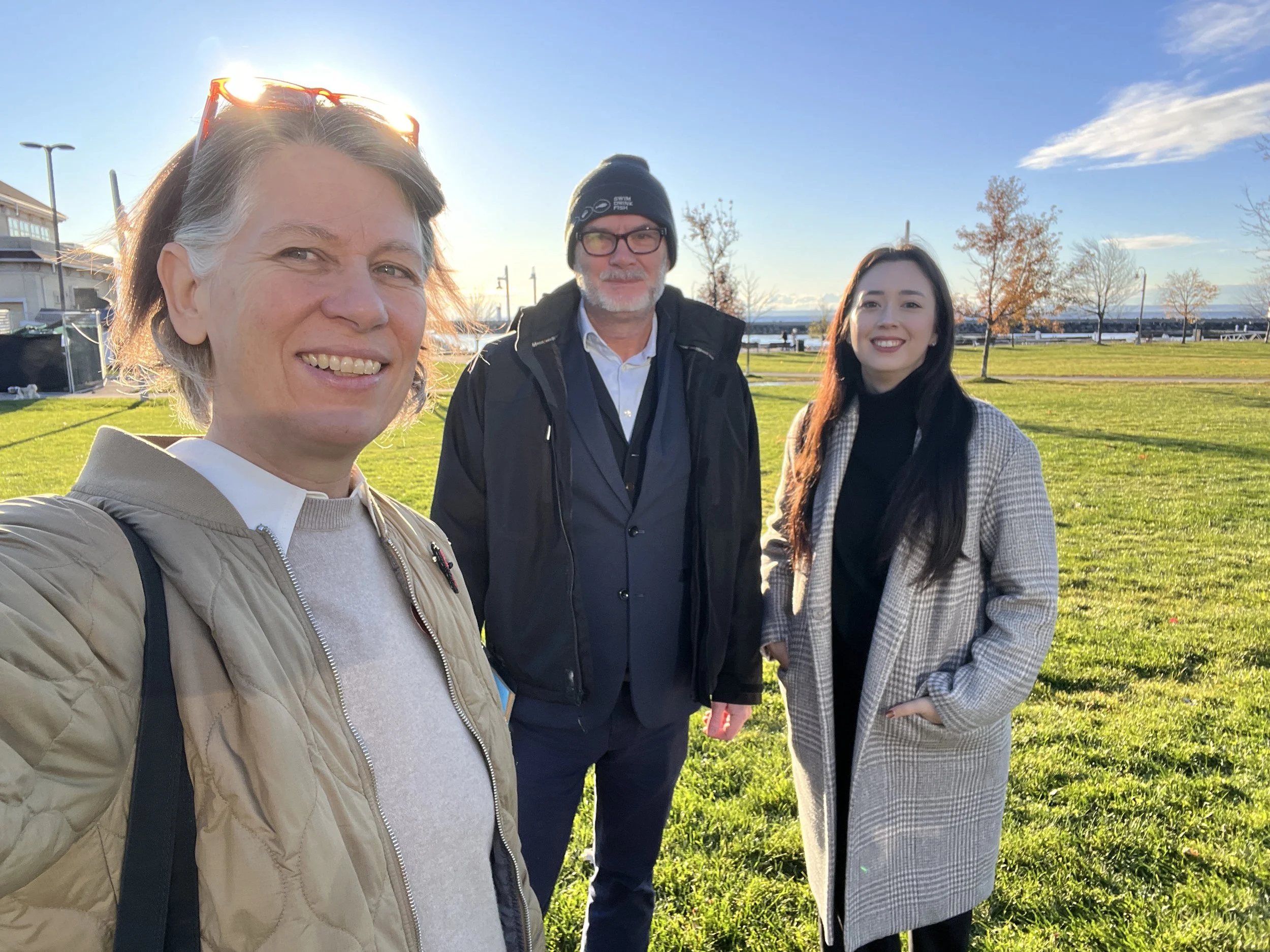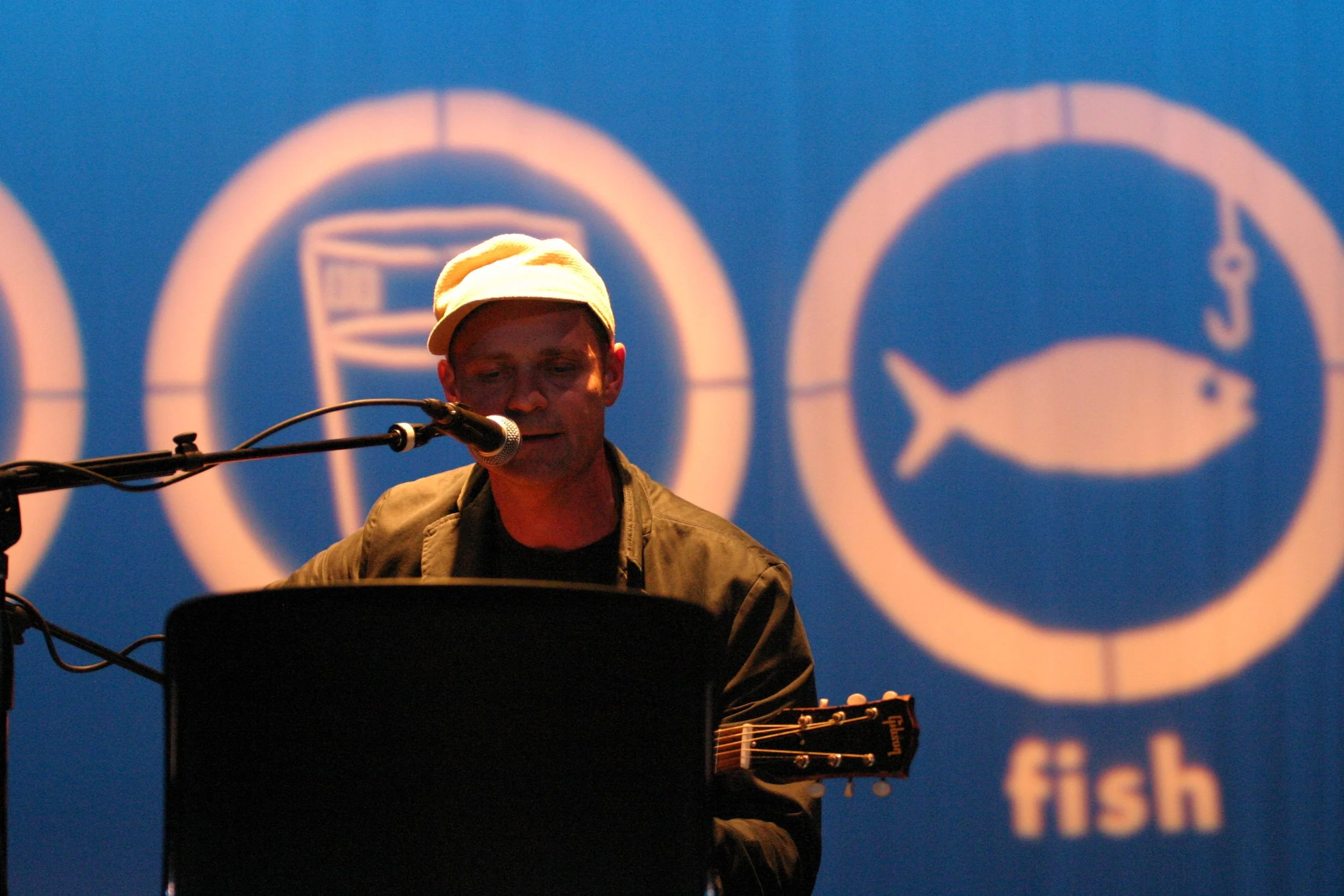A Year of Water, Wonder, and Work: Reflections from the Water’s Edge
Written by Mark Mattson, November 2025
This year was one of the most meaningful in my journey with Swim Drink Fish (SDF). For over two decades, we’ve worked at the water’s edge — in cities, on beaches, in parks, rivers, and lakes across Canada. We’ve sampled water, mentored others to do the same, and shared every piece of water quality data we could find through our Swim Guide platform. We’ve also worked to restore Canada’s connection to water through imaginative and innovative swimming piers.
On November 3rd in North Vancouver, in partnership with the City and with generous support from the Weston Family, we announced a new, world-class swimming pier to be built in Burrard Inlet. We also launched the Wave Prize, a fund designed to inspire other communities in BC to reconnect with water and ensure meaningful, equitable access for all.
Mayor Linda Buchanan, Councillor Holly Back, Councillor Don Bell, Mark Mattson, President of Swim Drink Fish and Bryan Bean, Head of Special Projects, Swim Drink Fish. Photo by Kevin Pilar
It may feel like the realization of a dream in SDF’s 25-year history — but to me, it’s just another step in a never-ending journey toward a sustainable future. The work doesn’t stop, because threats to water quality don’t stop. It takes vigilance and persistence to ensure people have access to clean water and the information they need to stay safe. Our determination today is just as strong as it was in 2001, when we began.
Already, people in B.C. are asking for more — more data, more transparency, more understanding. We’ve conducted two years of water quality sampling at the Burrard Inlet site to demonstrate its suitability for swimming, and we’ll continue to share these results regularly on Swim Guide. Questions about water quality are valid and important. They deserve thoughtful responses — and they highlight the need for water literacy: a deeper understanding of the risks associated with recreational water use versus those related to fisheries or shellfish consumption. Safety and restoration come through transparency, education, and engagement.
At SDF, we know we can’t rest. We have to be there — for every swimmer who will return to Burrard Inlet, for every community seeking reconnection, and for every voice calling for clean, swimmable water. We learned from our experience with the Gord Edgar Downie Pier in Kingston that connection is just the beginning of building a community ethic around protection for sustainable waters.
To bring attention to this bold vision, Fin, who swam the 1,400 km Fraser River in 1995 and 2000, is now leading the Fraser River Challenge — a five-year campaign uniting communities across the province in this shared goal.
Next year marks its marquee year: a 30-day, headwaters-to-sea expedition featuring a relay swim of the entire river by three women and several guest swimmers, a watershed walker, and canoe journeys connecting communities along the way. It’s a big, ambitious project with deeply meaningful impacts.
Mark Mattson, Kevin Lowe, and Fin Donnelly
In the Great Lakes–St. Lawrence River watershed, SDF is working with Canadian Geographic and a Shared Circle of Knowledge Keepers on the Biinaagami Initiative — a powerful educational movement to foster shared responsibility among the 40+ million people who rely on these waters. Every action — or inaction — affects not just people, but the birds, fish, and ecosystems that depend on these waters. Through floor maps, community science, events, and storytelling, we’re building bridges across cultures, jurisdictions, and generations. Our recent meeting with the Shared Circle of Knowledge Keepers at the Great Lakes St Lawrence Cities Initiative regional meeting in Ontario underscored the need to share responsibility for meeting our sustainable goals.
Meredith Brown, Mark Mattson, and Katie Doreen at the Great Lakes St Lawrence Cities Initiative regional meeting. Photo by Meredith Brown
Working for water is a fluid, lifelong commitment. It demands humility, focus, and the ability to keep moving forward — not for accolades, but for impact. The work creates the magic at the water’s edge. The moment you believe the job is done, the magic begins to fade.
One of my greatest mentors and inspirations was the late Gord Downie — singer, poet, and a deeply committed SDF board member. After The Tragically Hip’s final concert in Kingston, I joined him and his family at Camp Onakawana, where the Abitibi and Onakawana Rivers meet. One evening, after chopping wood, we sat by the fire. Someone asked Gord how he managed to give so much of himself on stage, night after night. He didn’t answer with words. Instead, he quietly stood, walked to the woodpile, and placed a few more logs on the fire. As the sparks rose into the night sky and mingled with the stars, he created a moment I’ll never forget.
Gord Downie, 2006
Do the work, he was saying. The magic will take care of itself.
That’s the lesson I carry forward into the new year. And it’s the lesson I hope others take to heart — because if you want to be an environmental advocate, you have to show up and be the spark. Again and again. For the water. For the people. For the future.
Our team hopes to see more people at the water’s edge in 2026. With the generous support of our donors and volunteers, the movement for swimmable, drinkable, fishable water in Canada continues to grow in strength and meet ambitious and impactful goals. Thanks to the many people over the past 25 years who helped make this happen, and welcome to everyone joining us today to make the next 25 years as powerful as the first.




